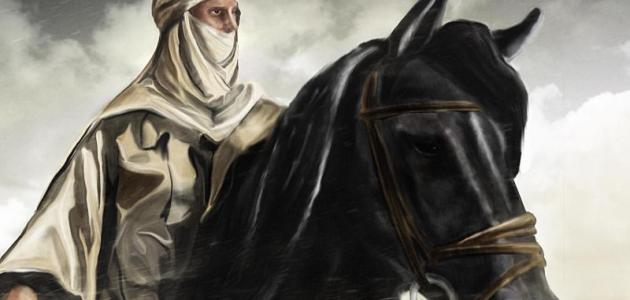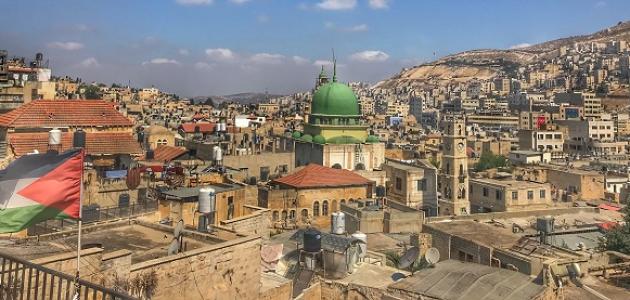Introducing Gibran Khalil Gibran
Gibran Khalil Gibran is an Arab writer and one of the poets of the modern era. His star shone and he became famous in the West, especially in America, just as he was famous in the East. He carried his word as a message with all boldness, and expressed his opinion firmly and consistently. He wrote many literary works through which he contributed to the development of modern Arabic literature. Where he followed the symbolic doctrine and the style of artistic composition.
The birth and upbringing of Gibran Khalil Gibran
Gibran Khalil Mikhail Saad was born on January 6, 1883 AD in the village of Bushra, located in northern Lebanon. He is of Syrian origin. One of his grandfathers had long been displaced from Damascus to Lebanon. His father was a poor man, and like other residents of the village, he worked in raising livestock. His mother, Mrs. Kamel Rahma, is a caring and compassionate woman, and the daughter of a Christian scholar. She raised her children well, and had a great role and influence in Gibran’s life and personality, as she encouraged and urged him to develop his talent in drawing and literary writing, and she was the one who introduced him to stories. The famous Arabic story, such as the story of One Thousand and One Nights, also introduced him to the poetry of Abu Nawas, and continued to support him since his childhood until he became a well-known and famous writer.
Education and culture of Gibran Khalil Gibran
Gibran began receiving his education at the age of five at Elisha School, a school that taught the principles of the Arabic, French, and Syriac languages. Then he moved with his mother to Boston in the United States of America, where he enrolled there in a school that taught the principles of the English language. Gibran was a very intelligent child. He was extremely ambitious, and was surrounded by a lot of attention from his teachers at school, especially after they noticed his artistic inclinations that heralded a bright future. He spent three years there, then returned to Lebanon and joined the Al-Hikma School, where he spent another three years during which he mastered Arabic language, then he was forced to return to Boston due to the death of his mother and brother from tuberculosis. In 1908 AD, he traveled to France to complete his studies in graphic arts at the Julian Academy in Paris, and he achieved great success there.
Read also:Ahmad Rafiq Al-MahdawiGibran’s upbringing in America - which was witnessing an intellectual renaissance at the time - had a great impact on his personality. He felt contradictory because of the difference between the Western environment and the Eastern environment in all aspects of intellectual, social, and political life, which made him revolt and resent the traditions and systems that prevailed in the East. During that period, and he directed his anger at her, Gibran was well-educated and widely read, especially Western writers such as Shakespeare and romantic poets such as Blake Kitsch, Shelley, and Nietzsche, in addition to his reading of Chaldean and Greek mythology. , and Egyptian. Gibran was influenced by some Western poets, and this was evident in his imitation of the prose poems of the American poet (Walt Whitman), who is considered the innovator of this art. He was also influenced by the philosophy of (Plato) in terms of romanticism and mysticism.
Gibran Khalil Gibran's literary beginnings
Gibran began publishing his literary articles in March 1904 AD, when he published his first article in Al-Muhajir newspaper. The article was entitled (A Vision). Readers admired it greatly because of its beauty of style and breadth of imagination, which encouraged Gibran to He published another series of romantic articles in the same newspaper, which he called “Letters of Fire.” Most of these articles were later published in the book “A Tear and a Smile.” Then, a year later, he published a long article entitled “Music.” After that, he published two collections of short stories, the first entitled (Prairie Brides), and the second entitled (Rebellious Spirits), in which he expressed his resentment against the unjust and corrupt feudal society, and his refusal to restrict love to traditions that he saw as outdated, and in that same period he had held a painting exhibition in Boston.
Read also:A search for Mustafa Lutfi Al-ManfalutiThe works of Gibran Khalil Gibran
His writings are in English
Gibran wrote a group of books in the English language, which we present in order of publication as follows:
- the crazy: Published in 1918 AD, this book was characterized by depth of thought and brevity of expression, and was characterized by the use of extreme sarcasm and symbolism.
- the previous: Issued in 1920 AD.
- the Prophet: Published in 1923 AD, it is one of Gibran’s most famous and wonderful books. He wrote it in a prose style that made it like poetry. It was distinguished by its vision, rhythm, image, and tenderness of feelings, and it embodies human values and meanings.
- Sand and foam: Published in 1926 AD, Gibran summarized in this book the idea he wanted from it, and it was full of examples and wisdom.
- Jesus the Son of Man: Published in 1928 AD, in this book, Gibran sees that Christ is a human being and not a god, holding the highest degree of humanity.
- Earth Gods: Published in 1931 AD, Gibran described his writings in this book as “coming from the poet’s hell,” and the philosophy of futility and controlling people’s destinies appeared in it. However, there was one glimmer of hope in this gloomy environment, which is eternal love.
- The wanderer: Published in 1932 AD, this book was characterized by the bitter sarcasm emanating from a desperate and pessimistic person.
- Prophet's Garden: It was published in 1933 AD, and death had fallen over the writer Gibran, and he was unable to finish this book, as he wanted to talk about the relationship of man with nature, after he had talked about the relationship of man with man in the book (The Prophet), so Barbara Young collected the writings that Gibran had written. At various times, she added it to the book to finish it.
His writings are in the Arabic language
- Meadow brides: This book was published in 1906 AD, and it contains three stories characterized by realism, which are: (Ashes of Generations and Eternal Fire), (Martha the Builder), and (John the Madman). Gibran published these stories for the first time in Al-Muhajir newspaper, where he was suffering from pain and sadness. Because of the death of his mother and brother.
- rebellious souls: This book was published for the first time in 1908 AD in New York, and it is a collection of short stories containing four stories: The Rose of the Hani, The Cry of the Graves, The Bride’s Bed, and The Infidel Khalil. These stories revolve around one idea, which is the rebellion of souls against the harsh traditions and laws that... It limits freedom of thought and heart, which allows a group of people to control people in the name of law and religion.
- broken wings: Published in 1912 AD, it is a romantic novel in which Gibran tells the story of a chaste love that was not destined to succeed in life. In this book, Gibran sanctifies the soul and sees that it is liberated from the body through death.
- A tear and a smile: Published in 1914 AD, this book came in a distinctive, wonderful, and new style that distinguished Gibran from the modern Arab writers, and no one preceded him. It was distinguished by the beauty of meanings and the splendor of imagination.
- Storms: Published in 1920 AD, Gibran wrote this book in a symbolic, literary, philosophical style, in which he talks about love, life, and death by imitating nature and interrogating flowers and trees. Gibran is dissatisfied with people and their traditions, glorifies rebellion against slavery, and praises the idea of isolation instead of submitting to traditions.
- Biddies and anecdotes: Published in 1923 AD, this book is a collection of Sufi philosophical articles, in which Gibran analyzes the human soul in all its tendencies and whims, addressing it at every time and place, calling for reform. He also goes to his homeland, Lebanon, depicting in it the places of beauty away from politics. He also touched on... The book discusses some of the figures of Arab thought, such as: Ibn Sina, Imam Al-Ghazali, and Ibn Al-Farid, and talks about the future of the Arabic language and the challenges it faces. In the last part of the book, the writer presents some poems that express his spiritual philosophy.
- Soliloquy of souls: This book presented a wonderful idea about Gibran’s vision of fine human values, such as: honesty, giving, and friendship. This idea emerged from a spiritual tendency that characterized Gibran’s writings in most of his books. In this book, Gibran mentioned some of the meanings that came in the book ( Biddies and jokes), such as evoking the image of Satan, who represents a hidden force that seeks to rob people of their will to be virtuous, and feed their passions with the desire to perform bad deeds.
Gibran Khalil Gibran's Literary Style
The following is a summary of the most important features of Gibran’s literature in terms of content and form:
Read also:Where was Al-Asmai born?- In his literature, Gibran followed two styles. The first was characterized by strength, rebellion against ideological restrictions and traditions, and the call for freedom and rejection of inheritance. The second style was characterized by investigating desires and the love of enjoying life. He revolted to destroy, then rebuild.
- Gibran followed several methods to express his thought, such as using the narrative method, the meditation method, and the proverbial method.
- Symbolism prevailed in most of Gibran's writings, with the exception of the books (The Gods of the Earth) and (The Prophet's Garden), and he contributed to his symbolism, influenced by Western writers such as (Shelley) and (Blake).
- Gibran's writings were characterized by beautiful, imaginative artistic images filled with profound meanings and expressions.
- His style was characterized by smooth words and simplicity of expression.
- Use a lot of synonymy and repetition of sentences and phrases that enrich the text with sweet music.
Realism and romanticism in the literature of Gibran Khalil Gibran
Realism was known in the modern era as an important movement in most areas of life in literature, art, philosophy, and politics. It appeared in France, America, and many European countries after the weakness of the romantic doctrine. Writers differed in its meaning, and the realist trend branched into several directions that differed. Among them in principles and goals, philosophical realism emerged, which is based on the material foundation that links all things to reality, knowledge, and nature independent of reason and thinking.
As for literary realism, it is the representation of reality as it is without other additions, such as imagination and romanticism, to novels and stories. I intended to tell stories about people and daily life experiences, especially the lives of the middle and lower classes in society, while leaving the freedom to the writer to use his emotion in portraying that reality. It is worth noting that Western realism differs from Eastern realism, as Western realism looks at reality with a pessimistic outlook, and depicts the decadence and tragedies of society, while Eastern realism, which is characterized by an optimistic outlook, opposes it, as it rejects man being the center of evil and sins.
Realism was evident in Gibran’s literature, especially in his narrative writings, as he inspired these stories from reality, and the human pain and tragedies that surround it. He presents the issue in all its dimensions, then diagnoses the cause, calling for its rejection and treatment. Gibran raised many social and human issues. Abstract, such as the issue of society’s injustice to women, and the issue of the injustice of clerics hiding in the name of religion, in addition to raising political issues, such as his call to the people of his nation to revolt against the existing rule.
As for Gibran’s romanticism, it was manifested in the glorification of man, whom Gibran considered the foundation and axis of the universe, and in the glorification of nature, which he was passionate about loving. He considered it the only refuge for man from sadness, pain, and injustice. He even considered it paradise, and called on people to return to its embrace. Romanticism also appeared in literature. Gibran through his embodiment of the phenomena of nature, in addition to his love for communing with these phenomena, such as the night, the moon, the sea, and the winds. Gibran’s romanticism is also evident in the tone of sadness and constant groans of pain in his literature.
The effect of nature on Gibran’s soul and his literature
The love of nature had a great impact on Gibran’s personality and literature. Gibran lived in the arms of nature during his childhood in his village of Bushra, which enjoyed stunning beauty that had not been touched or tampered with by civilization. This nature remained imprinted in Gibran’s imagination despite his movement in countries of the world where he could not find A beauty comparable to the beauty of his village, Gibran took nature as a symbol through which he expressed the various feelings and emotions that arose within him, and he considered it an inspiration for the lessons of life, love, and sincerity.
Gibran also used nature to show the beauty of the place, and to take the reader to a world created by the imagination, far from the reality in which we live, where he finds everything he desires in his reality, and the hopes and security he dreams of. Gibran revived nature and made it a subject of feeling and awareness, drawing from it ideas and thoughts. And the lessons, and he was able, with his winged imagination and exceptional ability, to articulate them, expressing love and beauty in her tongue, just as Gibran considered nature a refuge for humans from the worries of life and a source of happiness and pleasure in the hearts.
Gibran Khalil Gibran’s presidency of the Pen League
The Pen League was founded in New York in 1920 AD by an elite group of diaspora writers, headed by Gibran Khalil Gibran, who served as its president, and Michael Naima, who was its advisor. As for its members, they are: Elijah Abu Madi, Rashid Ayoub, Nasib Arida, Nadra Haddad, and Abd al-Massih. Haddad, and later Ahmed Zaki Abu Shadi joined it, and Al-Sayeh newspaper was responsible for publishing its news and poetry, and talking about its activities and efforts at innovation.
The poets of the League took the book (The Sieve) by Michael Naima as a constitution for the League and their poetic doctrine, and it showed the influence of Western romanticism, which has become a feature of modern Arab poetry. This influence appears clearly through the standards that Michael Naima set for poetry and linked them to human psychological needs, which are: the need. To eloquence, the need for truth, the need for beauty, and the need for music, and Michael made these standards the standard for the quality of poetry, and the members of this association complied with them, and took upon themselves the matter of innovation in Arabic poetry, so they launched a violent campaign against religion, language, and traditions, They called for freedom from the traditional language of poetry, romanticism, mysticism, and contemplation of the secrets of life and existence. The members of the association sought to have their literature free from all restrictions, so their star shone and they achieved wide international fame.
The death of Gibran Khalil Gibran
Gibran Khalil Gibran died in New York on April 10, 1931 AD, at the age of 48 years, as a result of suffering from tuberculosis and cirrhosis of the liver. Gibran’s wish was to be buried in Lebanon, so his remains were transferred in 1932 AD to Lebanon, where they were buried in his old hermitage, which I later learned about the Gibran Museum, and he had recommended that this sentence be written on his grave: (I am standing next to you now; close your eyes and turn around and you will see me in front of you).









